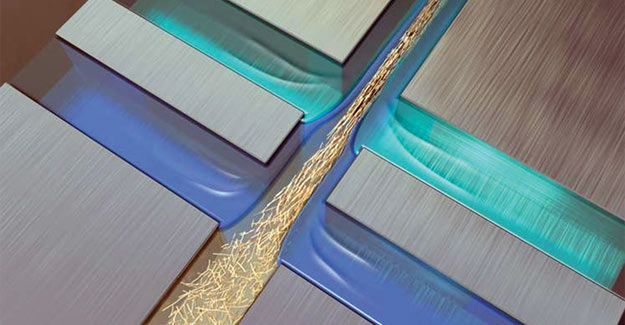The Bio-Based Material That's Stronger Than Spider Silk
The Bio-Based Material That's Stronger Than Spider Silk

The material created by KTH Royal Institute has a tensile strength of 1.57 gigapascals, stronger than dragline spider silk fibres.
Companies seeking viable, scalable alternatives to the composites or metals used as the backbone of automotive and aviation parts should keep their eyes on a biomaterials project being spearheaded by Sweden's oldest technical university, KTH Royal Institute of Technology.
Early this year, researchers revealed that they had engineered a cellulose nanofibre - aka the building block of trees and plants - described as eight times stiffer and 20% stronger than spider silk, commonly considered the world's strongest biologically derived substance. For those who like data: It has a tensile strength of 1.57 gigapascals; spider silk ranges from 0.6 to 1.3 GPa.
The lightweight material could have applications in a variety of sectors from automotive to aviation parts to furniture to medical devices such as artificial joints (although the latter uses will take longer to emerge), according to Daniel Soderberg, one of the KTH researchers. It could be used to replace some metal, alloys or ceramics, helping manufacturing address and reduce the carbon emissions typically associated with the production of those materials.
"One of the biggest challenges in fabricating engineering materials - materials that can be used to make 'real products' for society - from nanocomponents is to make use of the often-exceptional properties of the nanoscale building blocks in such a manner that the engineering material is able to retain these properties," Soderberg wrote in an email, in response to my questions about the project. "In our work, we have successfully been able to take one such nanocomponent, i.e. nanocellulose, which is nature's high-performance building block made by evolution to build e.g. trees and plants to make a usable … material that has exceptional mechanical properties on par with the performance of the nanocomponent."
How they did it
The researchers created the material using existing commercially available nanofibres from spruce and pine trees. It's actually a mashup of multiple fibres: a series of individual fibres - each measuring about 2-5 nanometers in diameter and up to 700 nm long - is packed together by suspending them in deionized and low pH water in a 1-millimeter, stainless steel channel. This allows "supranuclear interactions" that join the individual strands together.
KTH Royal Institute
The nanofibres are squeezed together using a process called "hydrodynamic focusing." The researchers got their inspiration from nature: by studying the alignment of the outer cell walls of trees and how they bond together. What's the drawback? One of Soderberg's co-authors, Nitesh Mittal, said that humidity could affect the performance of the nanofibres and weaken them. That means the cellulose nanofibre must be combined with other biobased materials to be truly practical.
One of the largest objections to biomaterials is the perceived expenses associated with migrating to new manufacturing or operational processes. Based on what's known today, the production process for this biomaterial would carry costs on a par with creating Kevlar fibres, Soderberg said.
The KTH team is working with RISE Bioeconomy, another Swedish research organisation, on an effort to produce larger quantities of the material in order to test it in practical applications. The researchers expect to receive a patent for their process by October, which will guide the next steps toward commercialisation.



 textileexcellence
textileexcellence 







